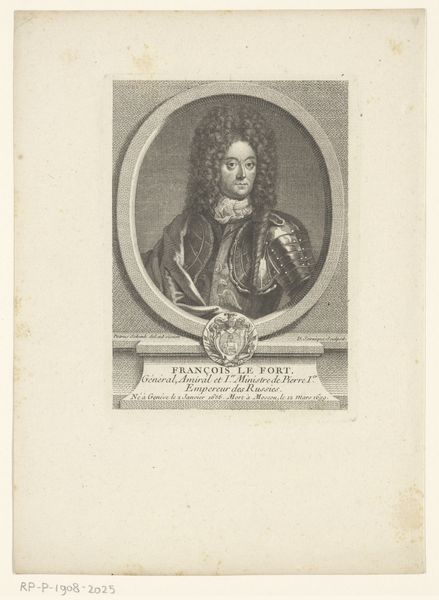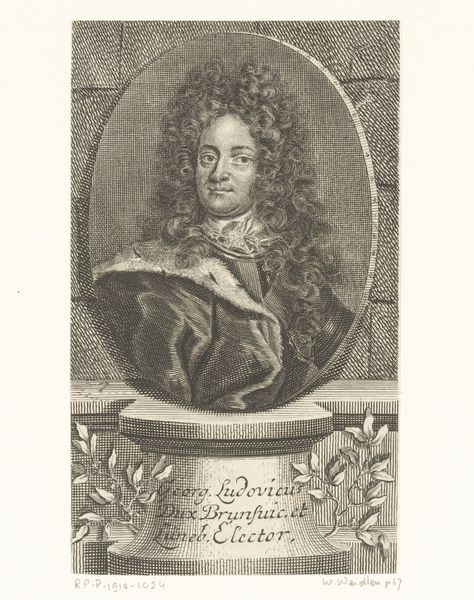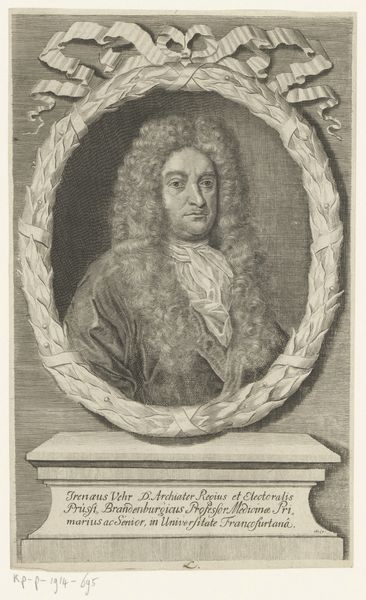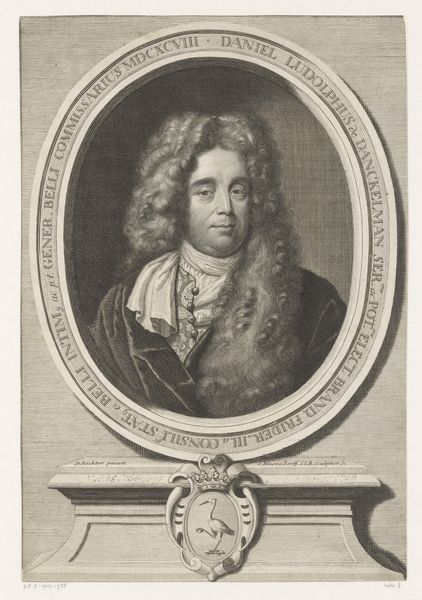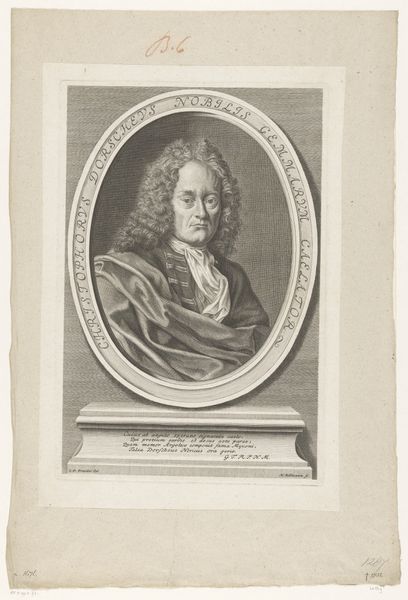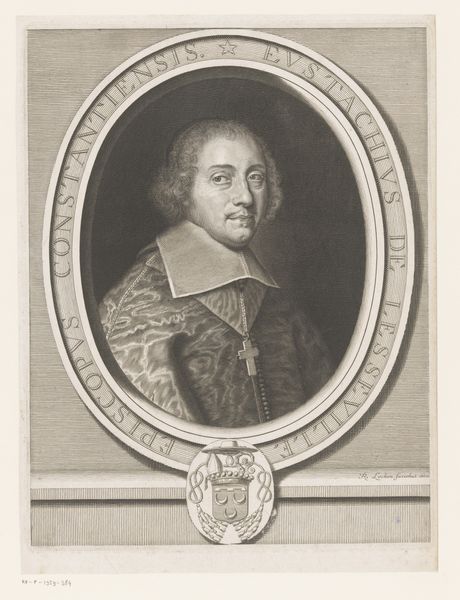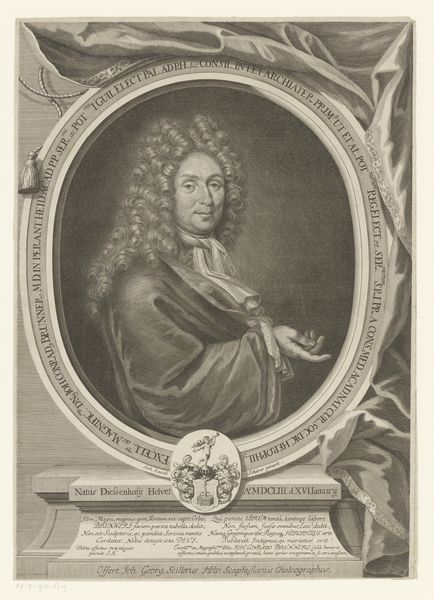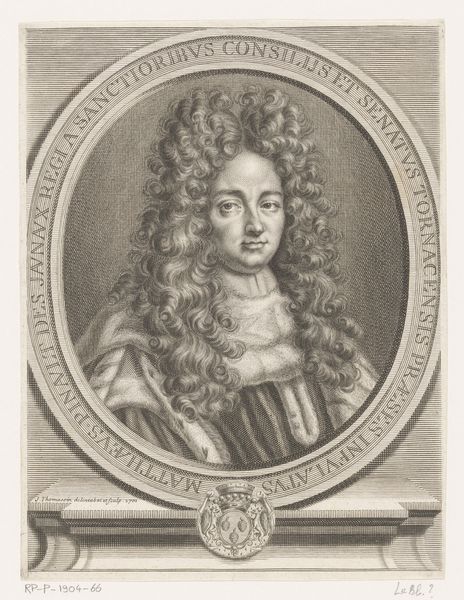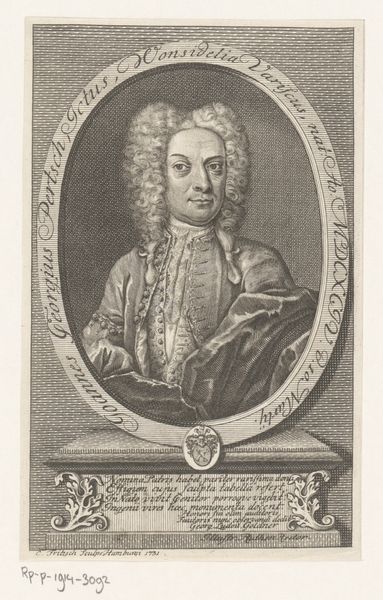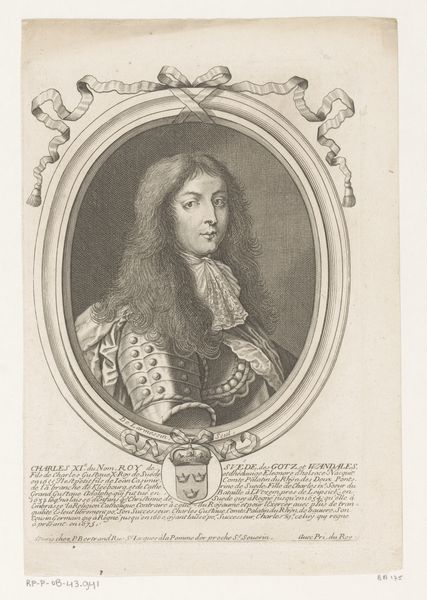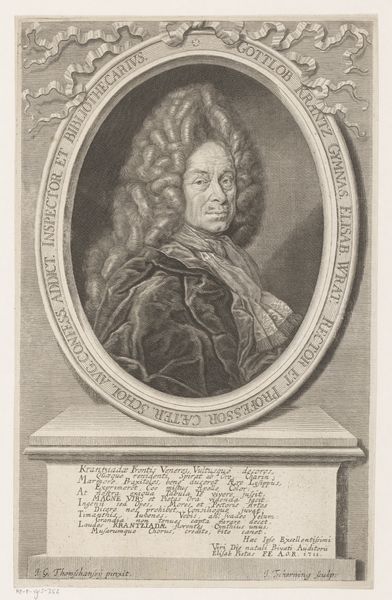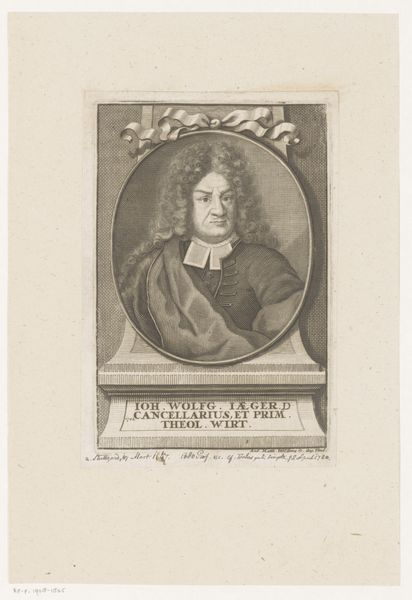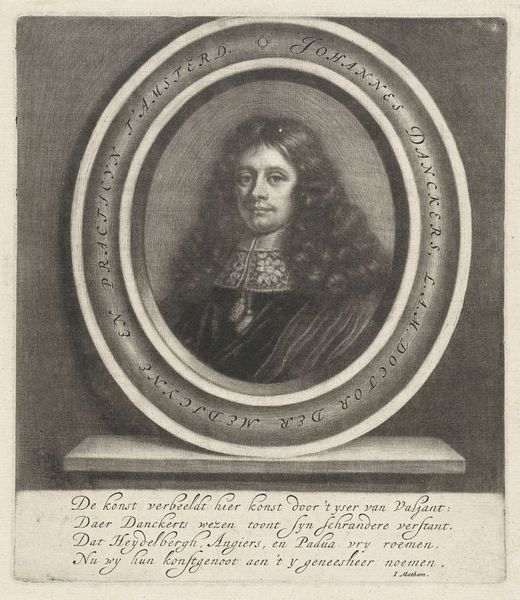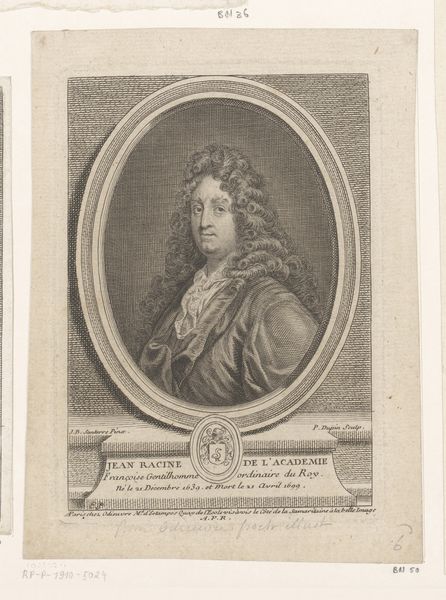
drawing, engraving
#
portrait
#
drawing
#
baroque
#
old engraving style
#
historical photography
#
portrait reference
#
history-painting
#
engraving
Dimensions: height 339 mm, width 232 mm
Copyright: Rijks Museum: Open Domain
Curator: Just look at this Baroque portrait, it's an engraving titled "Portret van Pierre Pomet," crafted in 1694 by A. Le Clerc, fils. The details are incredible! Editor: It's quite striking. There's an undeniable intensity in his gaze, like he's peering directly into your soul. You know, for me, oval frames always amplify the sensation that the person depicted is confined somehow. What is your reading of it? Curator: I think that framing gives him importance. He looks like an alchemist staring through a magic lens into other realms! Also the man exudes self-confidence doesn't he? Maybe it's because he's aware he will be remembered in history forever. Editor: The symbols inscribed around his portrait offer some historical context; there’s “ANNO ETATIS SUAE XXXV,” suggesting he was thirty-five. And I guess the inscription "PETRUS POMET AROMATARIUS PARISIENSIS” tells us about his professions. But how are we meant to see the image, do we have an indication on its cultural importance? Curator: The artist has an intriguing style that is an odd match. There's almost an uncanny valley to this representation. What do you mean? Well, it's incredibly realistic with incredible care for his physiognomy but also idealized to present him in his best light as the man would like to be perceived by others. Editor: A bit of vanity can be very helpful when seeking posterity, I’d argue. Beyond just personal vanity, such portraits can communicate social and cultural aspirations. I'd add the way the text functions—the use of Latin is another kind of symbolic framing. It positions the person within a very specific cultural milieu, associating the man in the picture with the traditions of humanist scholarship and power. Curator: You're making me appreciate those old engravers and their intricate work on seemingly tiny scales, really the details come alive! There’s almost a sense of being personally acquainted, don’t you feel so too? Editor: In the end, images are nothing more than memory machines: some remember, others teach how to remember, or what and how to believe. What does this Pomet’s image teach us about remembering our past?
Comments
No comments
Be the first to comment and join the conversation on the ultimate creative platform.
